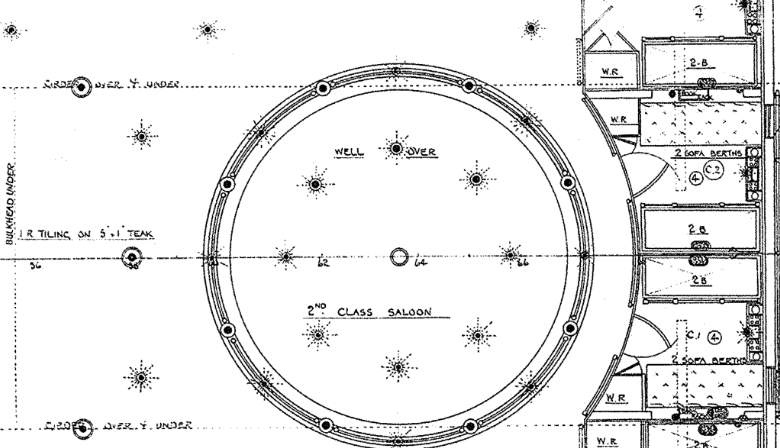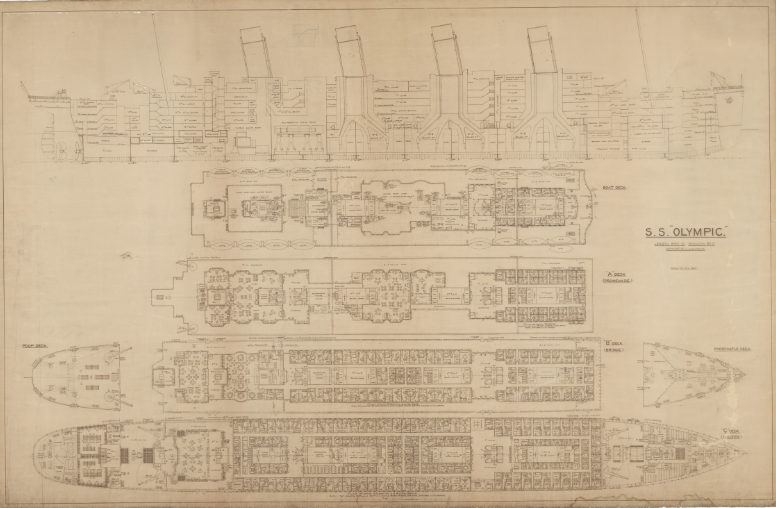ReferencesGeneral Arrangement PlansHarland and Wolff would instruct their team of draftsmen to draw up specific plans for the construction of Olympic and, subsequently, Titanic soon after. Very detailed technical plans were needed when iron and steel work determined the shape of the ships' hulls and decks. Because the two sisters were built practically identical, these Iron Plans were interchangeable.
However, after Olympic's first crossings in the summer of 1911, changes were to be implemented to Titanic mainly to improve passenger comfort. These two ships' passenger and crew arrangements, perhaps three-quarters similar, would have drastic disparities.
Historians and researchers, therefore, only have access to RMS Olympic General Arrangement deck plans and not detailed plans of the infamous sister.
But what is a General Arrangement plan?
Unlike with an Iron Plan in which dimensions and absolute precisions were detailed and required for specific areas, the draftsmen fleshed out the ship in entirety. The apparent lack of detail was due to the smaller scale encompassing the whole ship versus one deck or smaller section to show how the steel came together. But GA plans are still quite detailed with furniture, porthole, engine, ventilation, galley, and other equipment arrangements. Sadly, Harland and Wolff's GA plans were lacking in these detail compared to some of their contemporary counterparts such as shipbuilders crafting the great Cunard vessels (who included light, catwalks, handrail, and plumbing placement all on one GA plan!)
Some of the detail on the Lusitania GA Plan
The only example of a Titanic GA plan with some credence has been seen, yet never 100% verified, in one documentary from the late 1980s. It has gone missing since.
To facilitate the creation of a replica Titanic General Arrangement Plan, the researchers at Titanic: Honor and Glory had to look at many deck plans.
The team relied heavily on the following, but not all, plans:
RMS Olympic partial 1911 plan.
RMS Olympic full 1912 plan.
RMS Olympic full 1930 plan.
RMS Britannic partial plan probably from right before she was requisitioned for the war.
RMS Belgenland full plan.
RMS Aquitania full plan.
SS Leviathan full plan.
RMS Queen Mary full plan.
RMS Lusitania full plan.
Other full and partial plans: Minnewaska, New England, Oceanic, Ulster Monarch, and more.


